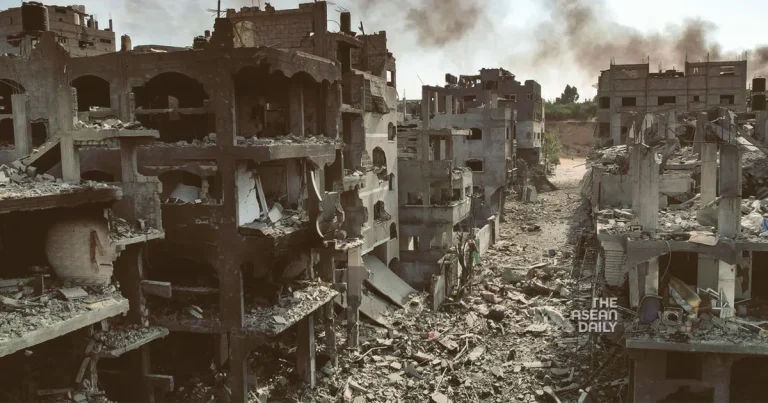10-11-2023 (GAZA) In the midst of the ongoing war in Gaza, medical professionals at Al Shifa Hospital are facing a distressing challenge: a lack of pain relief medication to help alleviate the suffering of the wounded. Nurse Abu Emad Hassanein recounted one particularly heart-wrenching moment when a young girl, her head wounded, cried out in pain and desperately called for her mother while he stitched her up without the aid of anaesthesia, simply because there was none available.
“We sometimes give them sterile gauze to bite on, hoping it will reduce the pain,” said Hassanein. He acknowledged that the pain experienced by the patients far exceeds what one would expect, especially considering their young age.
Nemer Abu Thair, a middle-aged man who arrived at Al Shifa to have his back wound treated after an airstrike, recalled how he received no pain relief when the wound was initially stitched up. “I kept reciting the Koran until they finished,” he said.
The war erupted on October 7 when Hamas militants breached the Gaza Strip’s border fence with southern Israel. Israel claims that Hamas killed 1,400 people and abducted 240 individuals, making it the deadliest day in Israel’s history. In response, Israel launched a comprehensive assault on the densely populated, Hamas-controlled enclave, resulting in the deaths of over 10,800 Palestinians, according to health officials in Gaza.
Mohammad Abu Selmeyah, the director of Al Shifa Hospital, explained that when a large influx of injured individuals arrive simultaneously, they are often forced to treat them on the floor due to a lack of adequate pain relief. He cited the aftermath of an explosion at Al Ahli Arab Hospital on October 17 as an example, where approximately 250 injured people were brought to Al Shifa, which only has 12 operating theaters.
“If we had waited to operate on them one by one, we would have lost many of the wounded,” stated Abu Selmeyah. “We were forced to operate on the ground and without anaesthesia, or using simple anaesthesia or weak painkillers to save lives.”
Under such dire circumstances, medical staff at Al Shifa have performed procedures such as amputations, stitching severe wounds, and treating serious burns without the availability of proper pain relief, as disclosed by Abu Selmeyah.
“It is painful for the medical team. It is not simple. It is either the patient suffers pain or loses his life,” he asserted.
The blast at Al Ahli Arab Hospital has been a subject of dispute, with Israel attributing it to a failed rocket launch by the Palestinian Islamic Jihad militant group and Palestinian Islamic Jihad and Hamas blaming an Israeli airstrike. The United States, a staunch ally of Israel, stated that its intelligence assessment supports Israel’s explanation.
Dr. Mohammad Zaqout, the director of Nasser Hospital in Khan Younis, located in the southern part of the Gaza Strip, revealed that there was a period during the early stages of the war when anaesthetic supplies completely ran out until aid trucks were allowed in.
“Some procedures were carried out without anaesthesia, including Caesarian sections on women, and we were also forced to operate on some burns that way too,” Zaqout explained. He acknowledged that the medical staff did their best to alleviate patients’ pain with alternative, weaker medications, but this approach proved insufficient.
While the shortage of anaesthesia has been somewhat alleviated at Nasser Hospital due to aid deliveries, severe shortages persist at Al Shifa Hospital and the Indonesian Hospital, both of which are located in the heavily bombarded northern part of the strip.
For the initial 12 days of the war, no aid was permitted to enter Gaza. On October 21, the first convoy of aid trucks was finally allowed through the Rafah Crossing on the strip’s border with Egypt. However, the United Nations and international aid groups argue that the amount of aid provided is far from sufficient to mitigate the unfolding humanitarian catastrophe.




